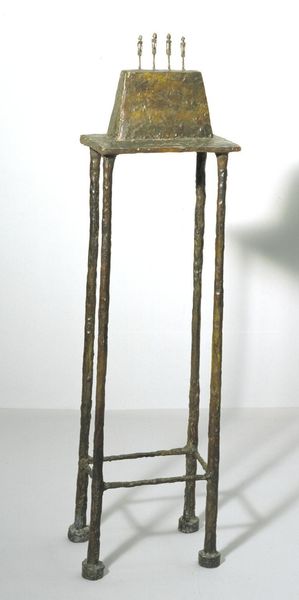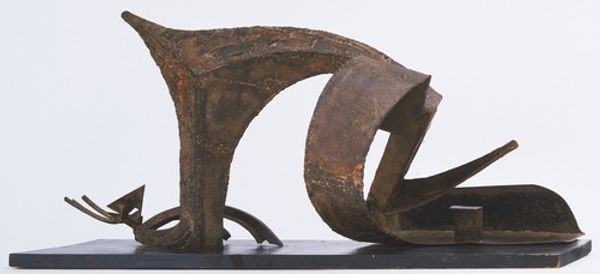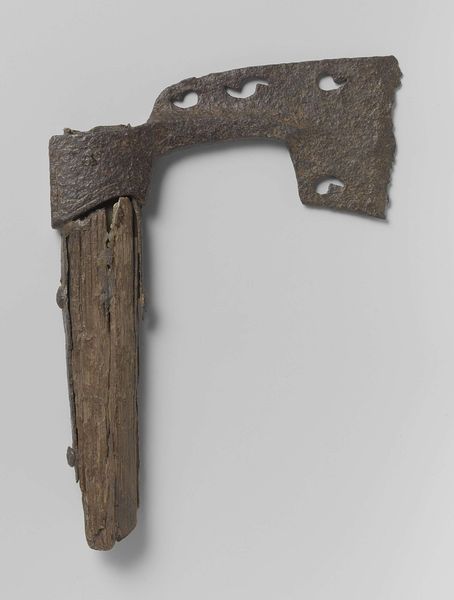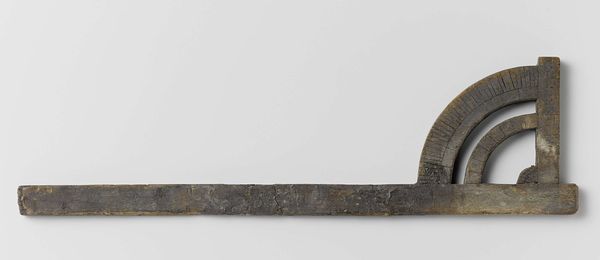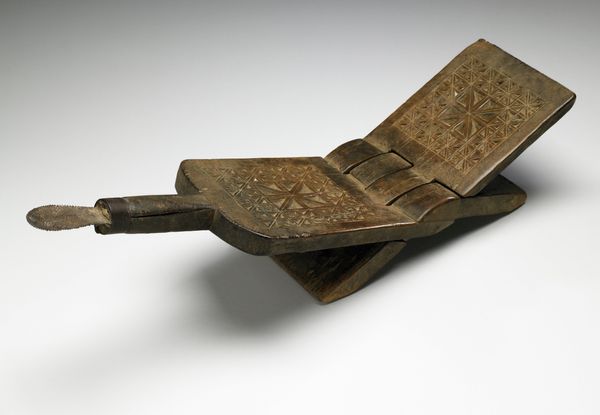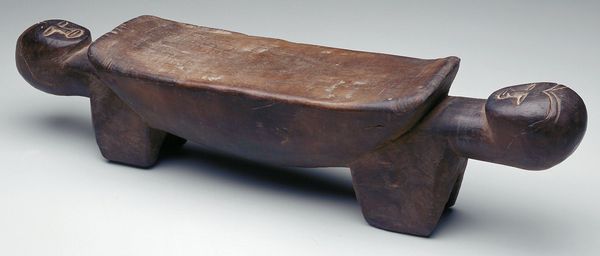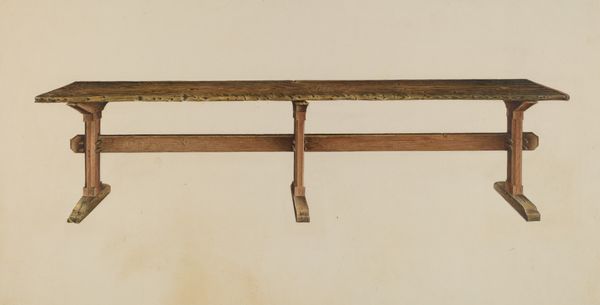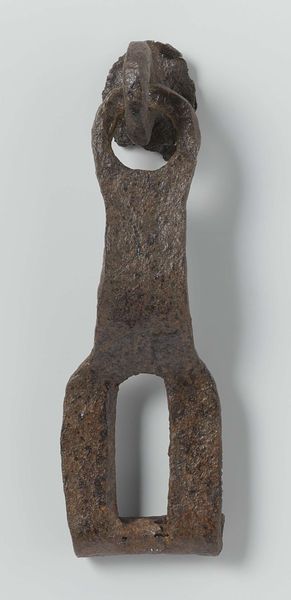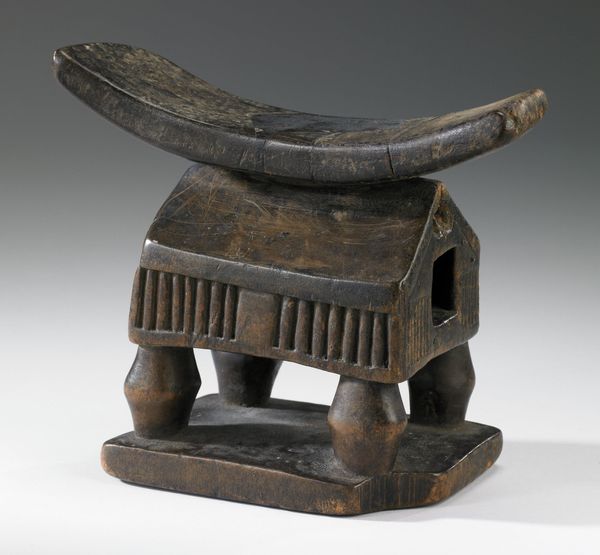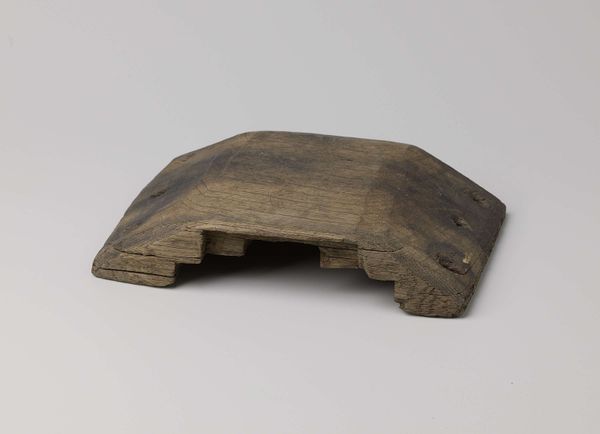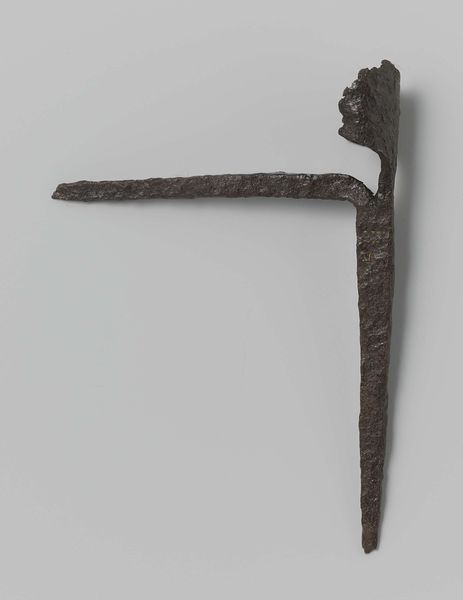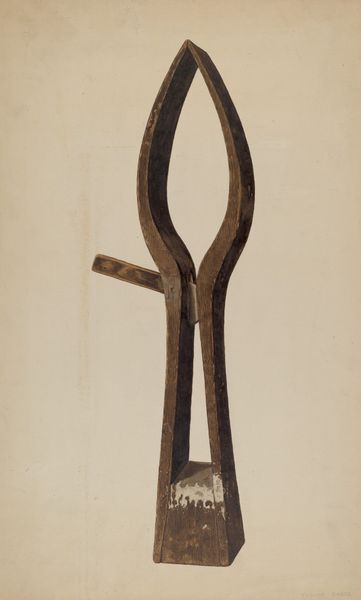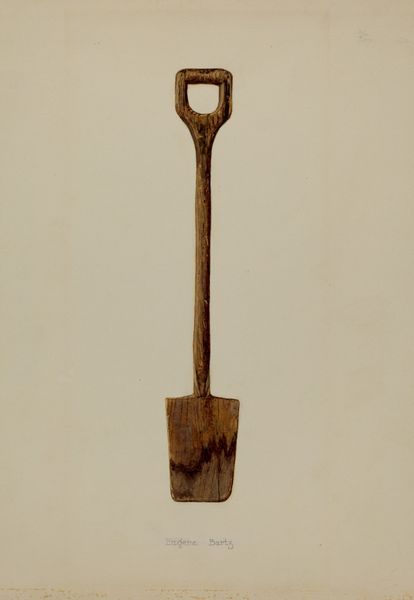
sculpture, wood
#
sculpture
#
form
#
sculpture
#
wood
Copyright: Public domain US
Curator: Ah, Brâncuși's "Arch" from 1915, crafted in wood. What do you make of it at first glance? Editor: A certain stoicism, certainly—monumental simplicity, but also the stark reality of its material, its age. It reads as an invitation, or perhaps the skeleton of a lost doorway. Curator: Brâncuși often played with pure forms, seeking the essence of an idea. Here, it's the archetype of an archway stripped down to its absolute structural components. It's fascinating, don't you think, how he invites the viewer to fill in the blanks. To create the meaning of that absent doorway in their own imagination. Editor: I agree. And given its date—smack in the middle of the first World War—it's impossible not to view it as a symbolic gesture. Is it a portal to somewhere better, or simply a reminder of what has been destroyed and what it means to rebuild. Or perhaps even to question whether or not things can be rebuilt the same. This artwork reflects the sense of futility following a catastrophic global war that redrew the very map of Europe and fundamentally challenged previous societal conventions. Curator: That's a resonant point. He created this sculpture after a pivotal journey to Romania, where he encountered the primordial simplicity of rural architecture. So it could be he wanted to offer a sense of grounding at that tumultuous time, going back to that place. Editor: A compelling interpretation, absolutely, the sculpture's use of natural wood elements can signify its relation to our planet. He shows us through that action the value and worth that nature contains to bring us back to a neutral or calm state of mind. It offers solace amid chaos. It acknowledges that there is turmoil in the present, but offers hope for our future on this Earth, where things could one day shift back. Curator: Well said. And for me it's the imperfection of it, the visible wear and tear of the wood, those simple joining marks; I love seeing all that human intention. Brâncuși wasn't aiming for polished perfection, but a sort of honest rawness, that speaks volumes, wouldn't you say? Editor: A very moving point indeed. The choice of the material speaks not of permanence or immortality but of constant movement. Imperfection gives it, instead, a human quality that asks a question of its viewers and ultimately pushes for active thinking.
Comments
No comments
Be the first to comment and join the conversation on the ultimate creative platform.
